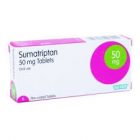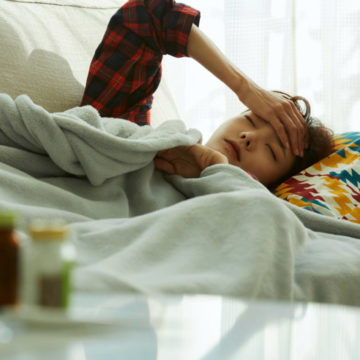A migraine attack is severely disabling. The worst mistake one makes when an attack starts is to delay taking medications in order to try and fight their way through the headache. That may be reasonable for mild attacks and if you are able to remove yourself from the surroundings to rest in a dark place. However, for many, an attack during work or during a recreational activity would prevent them from functioning. It is important to medicate within 30 minutes of an attack, and if you are someone who suffers from severe nausea and vomiting, then oral treatments may not be effective alone.
Here are some treatments you can to take to combat the symptoms:
Mild to moderate attacks:
Generic Analgesia
Acetaminophen is the least effective analgesic for migraine attacks. It is widely available, hence used by most people as a first choice. Non-steroidal anti-inflammatory medications like ibuprofen, diclofenac, and aspirin are more effective than paracetamol and widely available. Evidence suggests 1000mg aspirin or 400mg ibuprofen can improve the pain severity in most people. 1 in 7 people will be headache free at 2 hours[1]. 500mg naproxen lasts longer in the system and therefore the pain relief action can be longer lasting and 1 in 10 will be headache free at 2 hours[2]. There are no trials comparing these medications with each other, and therefore availability and tolerability are the main determinants of drug choice for non-specific analgesia.
Moderate to severe attacks:
Triptans
Triptans were the first migraine specific medications proven to be effective in moderate to severe attacks. They block a receptor known to promote pain chemicals in the brain. Triptan are available in several forms and doses. The use depends on individuals, as some may cause side effects which others may not. Standard (lower dose) triptans are more effective than generic analgesia. Compared to placebo (17%), triptans provide headache freedom at 2 hours in 42-76% of sufferers. Compared to placebo (17%), triptans provide 24 hours sustained headache relief in 29-50%[3].
Sumatriptan/Imigran
Sumatriptan was the first triptan formulated for migraine attacks. The effectiveness of the medication varies by the dose and route taken. It is available as a tablet, injection and nasal spray. The most effective form of treatment is subcutaneous injections under the skin. 37% people will be headache free after 2 hours after 6mg subcutaneous sumatriptan[3]. However, this method of administration is not suitable for many people and therefore oral and nasal sprays are preferred.
Oral sumatriptan (or Imigran) are available as 50mg and 100mg doses. 50mg is the standard dose for most people, allowing 27% people to be headache free at 2 hours. 100mg can improve the chances of being headache free (32.1%), but there is a slight increased risk of side effects such as nausea, dizziness or drowsiness[3].
Intranasal sumatriptan is available in 10mg and 20mg, providing pain freedom for 36.6% people. This has the advantage in people who suffer severe nausea and vomiting as the stomach slows down (gastric stasis) during a migraine, and prevents the oral medication from reaching the blood stream efficiently.
Rizatriptan/maxalt melts and Zolmotriptan/Zomig
After sumatriptan, rizatriptan and zolmitriptan have the best evidence for headache freedom. They are available in oral, melting wafer (rizatriptan as Maxalt melts; zolmitriptan as Rapi-melt) and nasal spray (zolmitriptan as Zomig).
20mg rizatriptan is highly effective for headache freedom (50.1% compared to 36.6% with 10mg). Increasing the dose for zolmitriptan does not seem to have the same effect (27.1% 2.5mg compared to 21% 5mg)[3].
Wafers and nasal sprays have the advantage of not requiring water, and can act faster than tablet forms. Maxalt melts have shown benefit in 50.20% patients, while Rapi-melts are effective in 36.6%. Rapi-melts also provided the best sustained 24 hours headache relief (50%). Zomig nasal spray is effective in 33.8%[3].
Other triptans
Several other triptans are available on prescription around the world. However, the availability in the UK is limited. They are not shown to be superior to sumatriptan, rizatriptan or zolmitriptan.
Side effects
There are side effects to all medications, although in general all the medications mentioned are safe. The commonest side effects of non-steroidal analgesia are gastric irritation. Caution is advised for sufferers of asthma and kidney disease. Triptans should not be taken more than the advised dosage. Some people may feel hot flushes, chest discomfort, and change in taste, pins and needles and nausea after using the triptan. These symptoms should wear off after a few hours as the drug is cleared. Triptans are contraindicated after a stroke, angina and heart attacks.
Conclusions
Migraine attacks are disabling, and treatment must be initiated within 30 minutes of an attack. For many, standard over the counter analgesia may be effective and more available. For moderate to severe attacks, triptans may be more effective and the choice of triptan depends on individual choice and effectiveness. Wafer and nasal spray forms of triptans are more effective than tablet form, and should be considered in those who suffer severe nausea and vomiting. The best evidence is for combinations of the above treatments if possible, as this can reduce the chances of side effects while improving the chances of recovery.
REFERENCES
1. Kirthi V, Derry S and Moore RA. Asprin with or without an antiemetic for acute migraine headaches in adults. Cochrane Database of Systematic Reviews. 2013:CD008041
2. Law Simon, Derry S and Moore RA. Naproxen with or without an antiemetic for acute migraine headaches in adults. Cochrane Database of Systematic Reviews. 2013:CD009455
3. Cameron C et al. Triptans in the Acute Treatment of migraine: a systematic review and network meta-analysis. Headache 2015 Suppl 4:221-235




